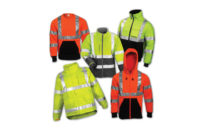
Our company recently conducted a national survey of safety managers and executives involved in purchasing high visibility safety apparel. Comfort and quality ranked as the most important factors influencing their purchases — not price.
Why is comfort so important? Many of the executives surveyed said their biggest challenge in having workers use high visibility gear is “getting employees to wear it” and “getting employees to wear it properly.”
Another national survey of safety managers revealed that 89 percent observed their employees failing to wear personal protective equipment (PPE) on the job. Asked what they are planning to do about it, about 70 percent said they would “purchase more comfortable PPE.”
Simply stated, if high visibility or any other type of PPE is not comfortable, workers are much less likely to wear it.
One size or type does not fit all
Unfortunately, many workers choose comfort over safety. One manager said one of his biggest problems is “making sure that our employees understand that nothing we are doing is worth one drop of blood.” Another commented that he struggled “to get people to understand the importance of the consequences of not wearing PPE.”The survey included executives in transportation as well as those in construction, utilities, waste management and other industries. The current Manual on Uniform Traffic Control Devices (MUTCD) from the Federal Highway Administration and ANSI 107 standards for high visibility apparel extend beyond typical use on highways — where most workplace fatalities occur, according to the Bureau of Labor Statistics.
Highway workers are not the only ones who risk being hit by a moving vehicle. Truck drivers leaving their cabs, law enforcement officers tending to an accident or directing traffic, delivery workers dropping off packages, utility workers inspecting lines, sanitation workers picking up garbage, and grounds workers doing maintenance can all be in danger if not wearing the proper high visibility apparel. Each job has different physical requirements. One size or one type of high visibility apparel does not fit all jobs or individuals.
Beyond vests
Two-thirds of those surveyed said that vests are the most common high visibility apparel that companies provide their workers. Vests may be a good choice for some tasks, but they are not always the most comfortable option. Sweatshirts and t-shirts, for example, may be better suited to specific workplace environments. They don’t have to be fastened, fit close to the body, and may offer more freedom of movement — plus they are now available in ANSI 107-compliant styles.What defines comfort? One executive surveyed said, “Proper fit and giving workers alternatives that work best for them is important.” Another said, “Compliant safety wear must be affordable, comfortable and durable — all at the same time. We look at price, quality and product features that serve our exact purpose on the job.”
While OSHA focuses primarily on safety issues, it acknowledges the importance of comfort in achieving compliance.
According to OSHA, “Employers should take the fit and comfort of PPE into consideration when selecting appropriate items for their workplace. PPE that fits well and is comfortable to wear will encourage employee use of PPE. Most protective devices are available in multiple sizes and care should be taken to select the proper size for each employee. If several different types of PPE are worn together, make sure they are compatible. If PPE does not fit properly, it can make the difference between being safely covered or dangerously exposed. It may not provide the level of protection desired and may discourage employee use.”
Select comfortable hi-viz apparel
Comfort issues can include apparel that is too hot or cold for weather conditions, a restrictive fit, or simply not looking stylish.When purchasing high visibility apparel, here are some guidelines to help ensure comfort:
- Do the garments come with a variety of sizes to accommodate men’s and women’s body types?
- Look for features such as elastic waists, adjustable straps, and draw cords that provide better range of movement.
- Get feedback from your workers about the apparel you provide. If they feel they have a choice in what to wear, they are more likely to comply. If they don’t like the way it looks or feels, they will not wear it consistently.
- Look beyond vests for safety apparel. T-shirts, sweatshirts or jackets may be more suitable for the job. A high visibility shirt or jacket which serves as the work wear itself may be a better option than safety apparel that fits over clothes — like a vest. Plus, unlike a shirt or pullover sweatshirt, a vest has to be fastened closed to provide complete safety.
- New materials (such as Birds Eye Polyester) provide better wicking and moisture management and are more effective at keeping workers cool. High visibility apparel makers are now producing softshell jackets that are water resistant, windproof, breathable, lightweight and durable.
- For cold work conditions, consider a jacket with a fleece liner to provide warmth. Insulated, breathable jackets can be made waterproof and windproof, and can include removable liners.
